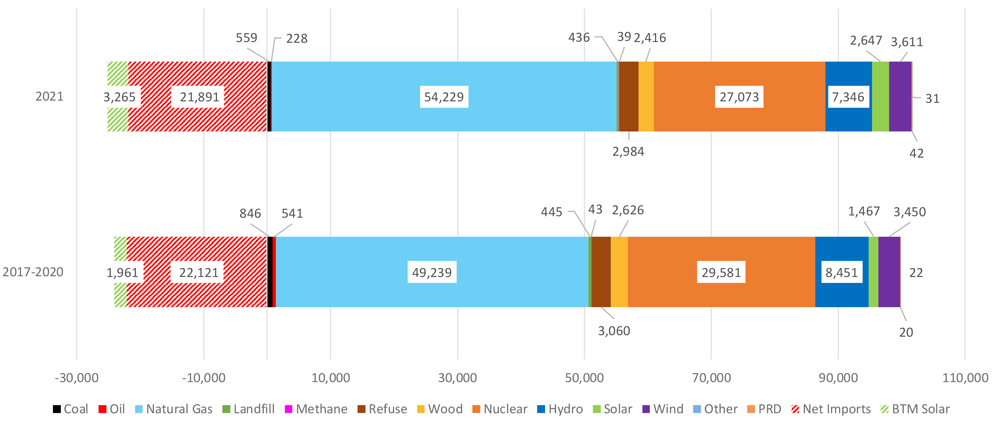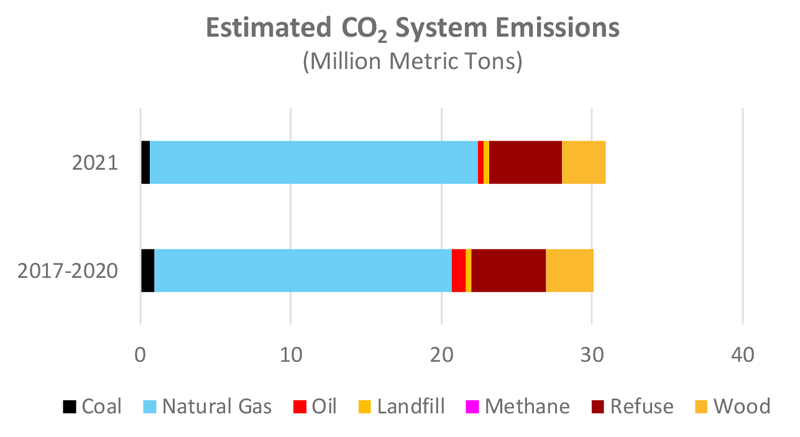For Anna Fendley of the United Steelworkers, carbon capture means the opportunity to clean up hard-to-decarbonize industries like steel and cement — and hold onto and expand union jobs.
To Tom Dower of LanzaTech, a carbon recycling company, it is a tremendous market for new products developed from captured carbon, from little black dresses and workout clothes to perfumes.
And for Collin O’Mara, CEO of the National Wildlife Federation, it is an essential part of the technological toolkit to get the U.S. to net zero. The 45Q tax credits in the Build Back Better Act could potentially increase the nation’s carbon capture capacity 13-fold, while taking 290 million metric tons of carbon out of the atmosphere per year, O’Mara said, citing figures from the Clean Air Task Force.
“It’s a huge wedge if you’re trying to get to net zero overall,” O’Mara told reporters during a Wednesday press call organized by the Carbon Capture Coalition, and he believes the 45Q tax credits in BBB have strong bipartisan support in the House of Representatives and the Senate. “This is not a controversial provision in terms of its inclusion in the final package. Really, we’re trying to make sure that there’s a lot of investment that flows in, that can take advantage of these [credits] and really get projects done at scale.
“Given the emissions that we have to reduce, we’re going to need every single solution, from renewables to carbon capture,” he said. “We’re still very confident that the Build Back Better package can move forward in the coming weeks and months.”
The bill stalled out in December after Sen. Joe Manchin (D-W. Va.) withdrew his support for the $2 trillion budget reconciliation package passed by the House, scuttling any hopes for passage in 2021 in the evenly divided Senate. The impasse has left an uncertain future for the bill’s tax credits for a range of no- and low-carbon technologies.
O’Mara, Fendley and Dower, and their organizations, are all members of the Carbon Capture Coalition, a broad-based, nonpartisan group that has pushed hard for a range of federal incentives for carbon capture, sequestration and utilization technologies. The organization scored a major victory with the passage of the bipartisan Infrastructure Investment and Job Act, which includes $12.1 billion to support the development of large-scale commercial carbon capture projects, a network of CO2 pipelines and four regional hubs for direct air capture.
But 45Q is now the coalition’s top priority for 2022. The federal tax incentive dates back to 2008, with successive expansions and extensions in 2018 and 2020. At present, carbon capture projects that inject into oil wells for enhanced oil recovery receive credits that start at $10/metric ton, increasing over time to $35/MT, while the credit for carbon sequestered in salt caverns or other underground formations ranges from $20-$50.
To qualify for the credit, facilities must also meet certain annual thresholds — 500,000 MT per year for power plants, and 100,000 MT for direct air capture or other industrial facilities.
The revisions in BBB would raise the credit, based on the type of project, and lower the thresholds, said Madelyn Morrison, external affairs manager for the coalition. For example, carbon stored in geological formations would qualify for credits of $85/MT, and the credits for direct air capture projects would range from $130 to $180.
The proposed provisions slash capture thresholds to 18,750 MT annually for power plants, 12,500 MT for industrial facilities and 1,000 MT for direct air capture.
Morrison said the existing thresholds “serve no policy purpose. … We see it as locking a lot of potential good projects out of the marketplace because there are maybe projects that are just below that threshold that could be good candidates for 45Q. Even facilities that are just above those thresholds, if there are outages like we’ve seen during COVID or for other reasons, that makes it a much riskier proposition.”
She also argued that increased tax credits will motivate developers to maximize their emissions reductions.
Still another new provision, a direct pay option for 45Q, is “the most critical reform to unlock more robust investment and carbon capture projects,” Morrison said. “It’s much more efficient [and] cost effective, for both the project developer and the taxpayer.”
‘Where Should Carbon Come From?’
As outlined during the call, the coalition’s basic arguments for carbon capture are a pragmatic mix of environmental concerns — the U.S. will not get to net zero without it — and the economic opportunity for business and job growth.
Fendley, the USW’s director of regulatory and state policy, sees the passage of BBB and the 45Q tax credit as “a pivotal moment.”
“We’re finally at the point where we have the possibility to make this a different story, especially for the industrial sector, a real success story,” she said. “We have real potential to retain jobs in … steel and cement and refining and chemicals. We have a real opportunity to invest in the long-term viability of our industrial base, which is so important to our economy, and we have the opportunity to create jobs.”
LanzaTech is also focused on the hard-to-decarbonize industries, which “may have few options that are at a commercial scale,” said Dower, the company’s vice president of public policy.
“Society will still need basic materials and carbon-based products. So, the question that we bring to the table is where should carbon come from?” he said. “We believe carbon can come from above the ground in the form of captured carbon emissions, from the air through direct air capture and from wastes such as agricultural, forestry and municipal solid wastes. We can covert those into the products that are needed today in existing supply chains.”
For example, the company recently announced a partnership with the fashion retailer Zara for a “capsule collection” of clothing made from low-carbon polyester sourced from steel mill emissions.
‘A Dangerous Distraction’
Still, carbon capture remains a divisive issue in the environmental community. In addition to the National Wildlife Federation, the National Audubon Society and Environmental Defense Fund are listed as supporters on the coalition website. But, in July, more than 500 environmental organizations published an open letter to law makers in the U.S. and Canada, calling on them “to recognize that carbon capture and storage is not a climate solution. It is a dangerous distraction driven by the same big polluters who created the climate emergency.”
More recently, an analysis from the General Accounting Office reported that since 2009, the Department of Energy had invested $1.1 billion in 11 carbon capture projects, producing two projects that are still operational, one that ended operations in 2020 and eight that were not built. The GAO recommended better oversight and monitoring by both the DOE and Congress.
In response, Jessie Stolark, the coalition’s public policy and member relations manager, argued that the projects that failed were developed prior to the 2018 expansion of the 45Q tax credit and also did not have the additional federal support that they needed.
“As a result, these projects were unable to secure necessary private financing at a time when natural gas prices were falling and anticipated federal climate policy never materialized,” Stolark said in a statement on the coalition’s website.
Reporters’ questions during Wednesday’s press call largely focused on what kind of compromises or other options might be available to get Manchin’s support and get the budget reconciliation package through the Senate and to President Biden’s desk.
While maintaining that he still thinks BBB will “get done,” O’Mara said, “There are a lot of components of the climate package that have broad bipartisan support. Look at the investments in the forestry sector, investments in the agriculture sector, some of the investments in coastal resilience.
“I do think there’s a package,” he said. “But it’s likely in a smaller form and likely insufficient to meet the types of [emission] reductions that we’re going to need. That’s why we’re all in on trying to get it done through the reconciliation package because we need that predictability and that level of investment.”

